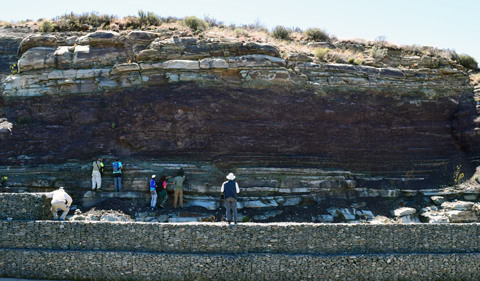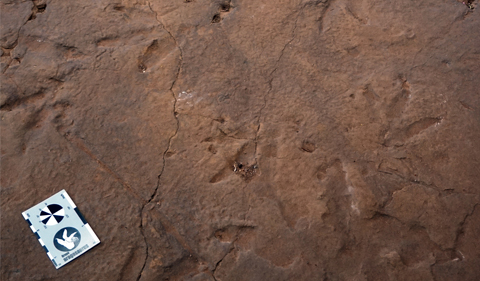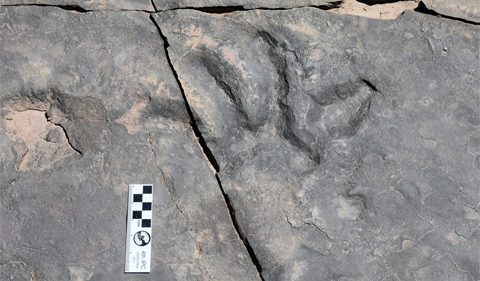
Dr. Daniel Hembree
Dr. Dan Hembree, Associate Professor of Geological Sciences at Ohio University, traveled to South Africa in October to present a keynote talk on “Experimental continental neoichnology: the lessons animals can teach us in the laboratory and field” at the Second International Congress on Continental Ichnology.

Ichnologists investigate a large Triassic burrow
Hembree’s keynote address discussed the research that he has conducted at Ohio University over the last 10 years with his graduate and undergraduate students studying various burrowing animals in the laboratory and field. The goal of his research is to better understand the behaviors of these animals, their impact on the soil environment, and the form of the burrows and other structures that they produce. Hembree applies what he learns about these animals to help to interpret fossil burrows and other biogenic structures preserved in ancient soils, some up to 400 million years old. Hembree also maintains the Continental Neoichnology Database, which provides all of the data he has collected to the scientific community and the public.
The purpose of the ICCI is to bring scientists together from around the world that study the preserved traces of ancient animals that lived on land, in rivers, and in lakes tens of thousands to hundreds of millions of years ago. These trace fossils include burrows, tracks, and trails produced by animals and plants as a result of their life activities.
The 2017 ICCI conference included paleontologists and sedimentary geologists from South Africa, Zimbabwe, the United States, Canada, Argentina, Brazil, Uruguay, England, Germany, Italy, Poland, Russia, Spain, Sweden, and Switzerland. The conference was held near Cape Town in South Africa and included four days of presentations and collaborative discussions of research on everything from interpreting the distribution and natural history of dinosaurs from their tracks to the effects of mass extinctions on soil ecosystems.

Jurassic theropod tracks
The ICCI conference included a four-day field excursion to examine the world famous trace fossil localities of the South African Karoo Basin, ranging from 300 to 150 million years old (Permian through Jurassic). These sites included a spectacularly well-preserved, 260 million-year-old river flood deposit containing tracks of large amphibians, reptiles, arthropods, and snails as well as other structures that showed where water flowed, ponded, and dried up on the ancient landscape. The field excursion also involved an investigation of two Jurassic dinosaur tracksites in Lesotho, which included tracks of large to small theropod (meat-eating) and hadrosaur (duck-billed) dinosaurs as well as smaller reptiles and amphibians.

Permian reptile tracks
Participation in international conferences such as ICCI provide Hembree and other faculty at Ohio University with the opportunity to not only share the high quality research they and their students are conducting, but also to build collaborative projects with other scientists from around the world. These conferences also provide faculty with valuable experiences and new ideas that they can share with OHIO students and faculty.



















Comments